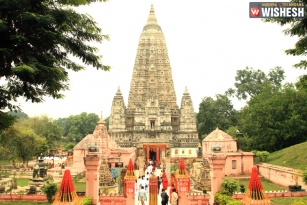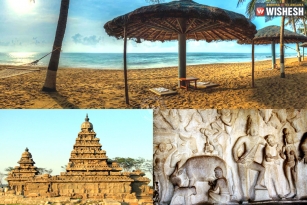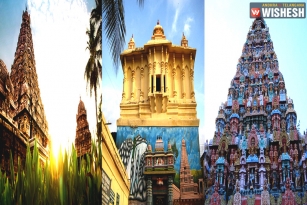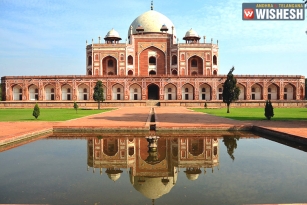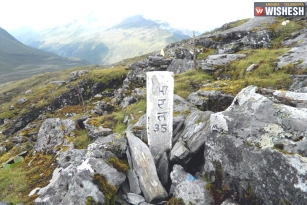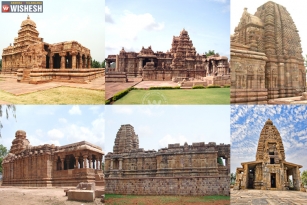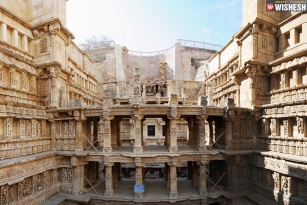
Sarnath is located just 12 KM from the Hindu holy city of Varanasi in the state of Uttar Pradesh, India, is the site of the deer park where Gautama Buddha first taught the Dharma after his enlightenment. Sarnath is one of the four holy Buddhist sites sanctioned by Sri Buddha himself for pilgrimage. The other three sites are: Lumbini (birth); Bodh Gaya (enlightenment); and Kushinagar (death).
Singhpur, a village one KM away from the site, was the birthplace of Shreyansanath, the eleventh Jain Tirthankar of the present age (Avasarpini), and a temple dedicated to him, is an important Jain pilgrimage centre.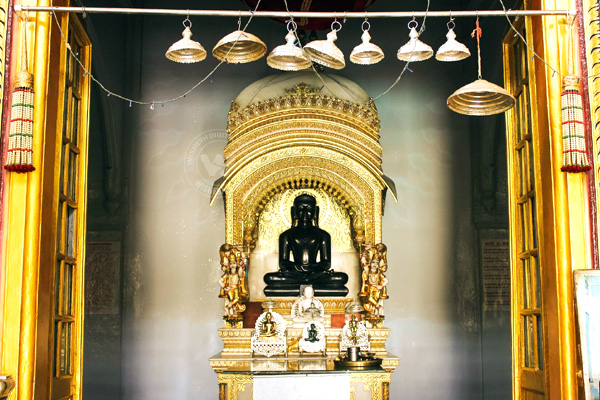
Sarnath has previously been known as Mrigadava, "deer park," and Isipatana, meaning the place where holy men fell to earth. The latter name is based on the legend that when Sri Buddha was born, devas or demigods came down to announce it to 500 holy men. The holy men all rose into the air and disappeared and their relics fell to the ground.
The current name Sarnath came from Saranganath means "Lord of the Deer" and relates to another old Buddhist story in which the Bodhisattva is a deer and offers his life to a king instead of the doe he is planning to kill. The king is so moved that he creates the park as a sanctuary for deer.
History
After his enlightenment in Bodhgaya, Sri Buddha went to Sarnath seeking his five former companions. He found them, taught them what he had learned, and got enlightened. This event is referred to as "the turning of the wheel of the Dharma" and also marks the founding of the Sangha, or the community of monks.
Sri Buddha's first discourse, delivered here at Sarnath, is known in Pali as the Dhammacakkhapavathana Sutta. Other Suttas include the Anattalakhana Sutta and the Saccavibhanga Sutta. Sri Buddha's central teaching after his enlightenment centered around the Four Noble Truths (concerning the meaning of life) and the Noble Eightfold Path (concerning the right way to live).
Sri Buddha spent the next rainy season in Sarnath at the Mulagandhakuti Vihara. The Sangha, having grown to 60 in number, Sri Buddha sent them out to teach the Dharma to others.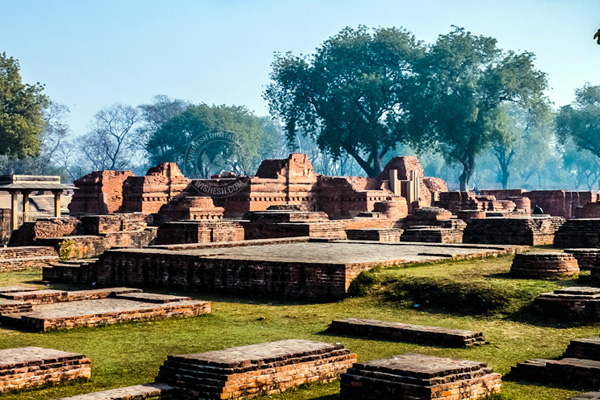
Sarnath became a major center of the Sammatiya school of Buddhism, one of the Nikaya or Hinayana schools. The presence of images of Heruka and Tara indicates that Vajrayana Buddhism was also practiced here.
At the end of the 12th century, Sarnath was attacked by Turkish Muslims. The site was subsequently plundered for building materials and has remained in ruins until the present day. The site was entirely deserted until 1836, when the British began excavations and restoration.
All of the ancient buildings and structures at Sarnath were damaged or destroyed by the Turks. However, amongst the ruins the Dharmekh Stupa is impressive at 128 feet high, and 93 in diameters. This dates from around 200 BC and is the spot where Sri Buddha is said to have preached his first sermon.
Only the foundations remain of the Dharmarajika Stupa, but it is notable as a rare pre-Ashokan stupa. The Ashoka Pillar at Sarnath survived the Turkish invasion, but was broken during excavations. The base still stands in its original spot and has some interesting carvings. The splendid lion capital that topped the pillar is on display at the Sarnath Archeological Museum.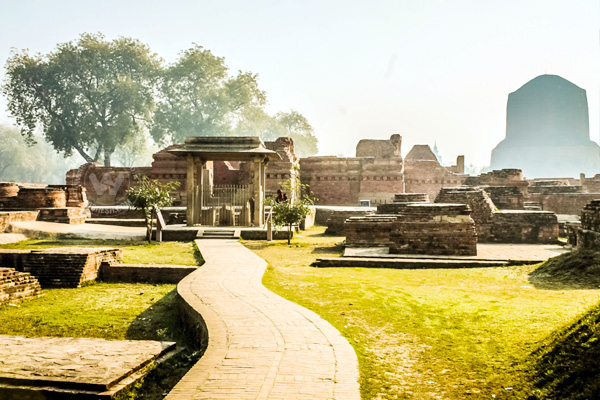
The decaying ruins of the Mulagandhakuti Vihara mark the place where Sri Buddha spent his first rainy season in meditation. In the 7th century, a writer described it as 200 feet high and containing 100 niches containing a Buddha carving along each wall. A life-sized statue shows Sri Buddha turning the wheel of the law.
Buddhism flourished in Sarnath in part because of the support of kings and wealthy merchants based in nearby Varanasi. By the 3rd century Sarnath had become an important center for the arts, which reached its zenith during the Gupta period (4th-6th century AD). When Hsuan Tsang visited Sarnath in the 7th century, he found 30 monasteries and 3000 monks living at Sarnath.
There is also a Bodhi tree planted by Anagarika Dharmapala which was grown from a cutting of the Bodhi tree at Bodh Gaya. It is located next to a Sri Lankan monastery. Six national temples have been built by various Asian communities at Sarnath since the site's restoration, including a Tibetan temple and Sri Lankan temple.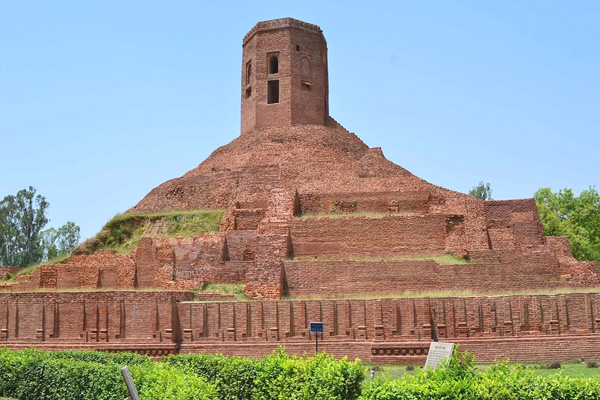
Isipatana is identified with the modern Sarnath, six miles from Varanasi. Alexander Cunningham found the Mrigadaya represented by a fine wood, covering an area of about half a mile, extending from the great tomb of Dharmekh on the north to the Chaukundi mound on the south.
Legends
Isipatana is mentioned by Sri Buddha as one of the four places of pilgrimage which his devout followers should visit, if they wanted to visit a place for that reason.
It is said that when Sri Buddha-to-be was born, some devas (demigods) came down to announce it to 500 rishis. The rishis all rose into the air and disappeared and their relics fell to the ground. Another explanation for the name is that Isipatana was so called because sages, on their way through the air (from the Himalayas), alight here or start from here on their aerial flight. Pacceka Buddhas, having spent seven days in contemplation in the Gandhamadana, bathe in the Anotatta Lake and come to the habitations of men through the air, in search of alms. They descend to earth at Isipatana. Sometimes the Pacceka Buddhas come to Isipatana from Nandamulaka-pabbhara.
Hsuan Tsang quotes the Nigrodhamiga Jataka to account for the origin of the Mrigadaya. According to him the Deer Park was the forest gifted by the king of Varanasi of the Jataka, where the deer might wander unmolested.
Gautama Buddha at Isipatana
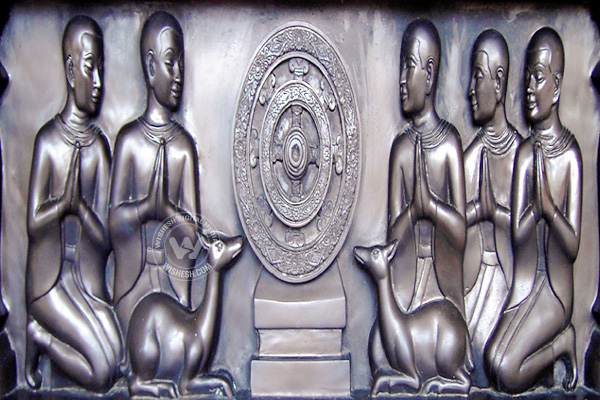
Sri Buddha went from Bodhgaya to Sarnath about 5 weeks after his enlightenment. Before Gautama (the Sri Buddha-to-be) attained enlightenment, he gave up his austere penances and his friends, the Pancavaggiya monks and went to Isipatana.
After attaining Enlightenment Sri Buddha, leaving Uruvela, travelled to the Isipatana to join and teach them. He went to them because, using his spiritual powers, he had seen that his five former companions would be able to understand Dharma quickly. While travelling to Sarnath, Gautama Buddha had to cross the Ganges. Having no money with which to pay the ferryman, he crossed the Ganges through the air. When King Bimbisara heard of this, he abolished the toll for ascetics. When Gautama Buddha found his five former companions, he taught them, they understood and as a result they also became enlightened. At that time the Sangha, the community of the enlightened ones, was founded. The sermon Sri Buddha gave to the five monks was his first sermon, called the Dhammacakkhapavathana Sutta. It was given on the full-moon day of Asalha. Sri Buddha subsequently also spent his first rainy season at Sarnath at the Mulagandhakuti. The Sangha had grown to 60 in number (after Yasa and his friends had become monks), and Sri Buddha sent them out in all directions to travel alone and teach the Dharma.
Isipatana after Sri Buddha

Xuanzang found, at Isipatana, fifteen hundred monks studying the Hinayana. In the enclosure of the Sangharama was a vihara about two hundred feet high, strongly built, its roof surmounted by a golden figure of the mango. In the centre of the vihara was a life-size statue of Sri Buddha turning the wheel of the Law. To the south-west were the remains of a stone stupa built by King Asoka.
In front of it was a stone pillar to mark the spot where Sri Buddha preached his first sermon. Nearby was another stupa on the site where the Pancavaggiyas spent their time in meditation before Sri Buddha's arrival, and another where five hundred Pacceka Buddhas entered Nibbana. Close to it was another building where the future Sri Buddha Metteyya received assurance of his becoming a Sri `Buddha.
Sarnath has been developed as a place of pilgrimage, both for Buddhists from India and abroad. A number of countries in which Buddhism is a major (or the dominant) religion, among them Thailand, Japan, Tibet, Sri Lanka and Myanmar, have established temples and monasteries in Sarnath in the style that is typical for the respective country. Thus, pilgrims and visitors have the opportunity to experience an overview of Buddhist architecture from various cultures.
By Premji



